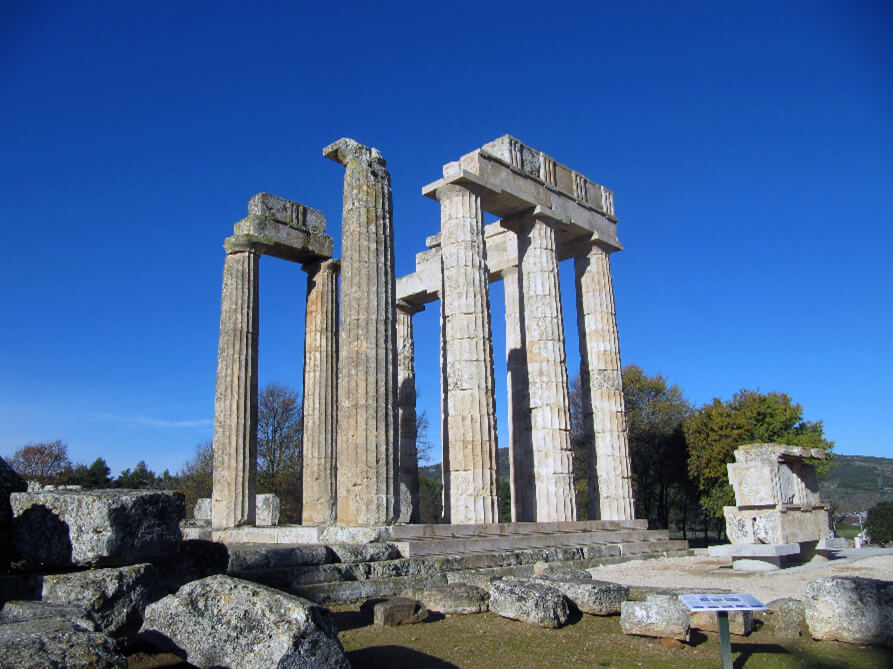This website uses cookies so that we can provide you with the best user experience possible. Cookie information is stored in your browser and performs functions such as recognising you when you return to our website and helping our team to understand which sections of the website you find most interesting and useful.
Archaeological Site of Nemea


The EHL Site
The archaeological site of Nemea is one of the most important religious centers of the ancient world. The most significant monument of the Sanctuary was the temple of Zeus (330 B.C.) within preserves evidence of an older temple (6th century B.C.) in the same place. There was an open square around the temple that was called “Epipola”, where there were a few monuments and the sanctuary’s sacred grove of cypress trees. East of the temple was the oblong altar of Zeus. The Xenon, bath, stadium, and hero shrine of Opheltes were constructed during the same period as the temple became the center of pan-Hellenic Nemean Games in honor of Ofeltis. After 270 BC, the games were removed from Nemea, and the sanctuary gradually began to decline.
A revival is observed at Nemea in the 4th c. AD, when the opening of a drainage canal made the valley both cultivable and inhabitable. This resulted in the growth of quite a sizable Early Christian settlement of farmers and herders, who built their houses using ancient building materials. The center of the Early Christian community was its three-aisled basilica, built over the ruins of the Xenon.
European dimension
The archaeological site of Nemea, emblematic due to the organization of the Nemean Games in antiquity, connects us with the sports roots of Europe and the ideals of classical sports as an element for the comprehensive education of young people. The Stadium that survives to this day is a characteristic example of this type of constructions in its original form. Furthermore, the revival of the Games reflects fundamental EU values such as equality, social inclusion, and peaceful coexistence of people.
The organization
The Archaeological Site and the Museum of Nemea belongs to the Εphorate of Antiquities of Corinthia, a regional Service of the Hellenic Ministry of Culture. The Ephorate undertakes all necessary projects for the maintenance of the site, records antiquities, restores monuments, and carries out museum exhibitions, educational programs, cultural and scientific events. It has also the administrative duty to protect the antiquities and ensure the preservation of the site. In terms of conservation, restoration and educational programs the Ephorate is assisted accordingly by the competent Central Services of the Ministry of Culture, whereas it collaborates with research institutions, notably the American School of Classical Studies.
